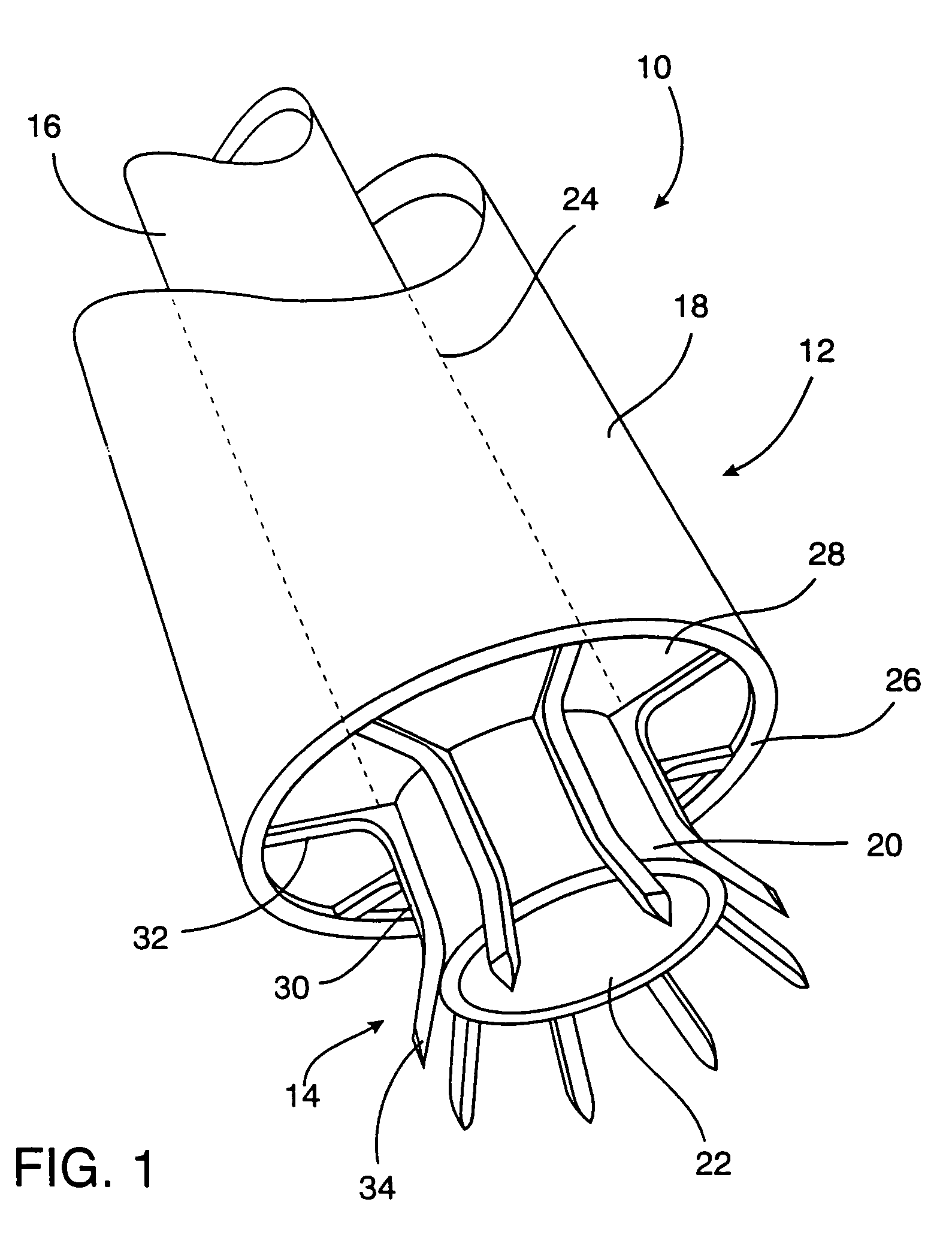System for performing vascular anastomoses
a technology of anastomosis and system, applied in the field of system for performing anastomosis, can solve the problems of high technical and time-consuming procedure, limited number of native arterial conduits available, muscle tissue death,
- Summary
- Abstract
- Description
- Claims
- Application Information
AI Technical Summary
Benefits of technology
Problems solved by technology
Method used
Image
Examples
Embodiment Construction
[0046]The present invention provides an anastomosis system comprising various devices and associated methods of using the devices to perform anastomosis of hollow tissue structures, which may be vascular or nonvascular structures. The devices and methods will be described in connection with a preferred application thereof, namely, coronary artery bypass grafting during which a vascular conduit, such as a vein, artery, or artificial conduit, is anastomosed to an aorta. It will be understood that the invention will find use in various other applications not specifically described herein.
[0047]With the foregoing as background. FIG. 1 illustrates an anastomosis system indicated generally by the reference numeral 10 which comprises an applier 12 and a plurality of tissue securing members 14. The applier 12 includes first and second applier members 16, 18 which are relatively movable. In the illustrated embodiment, the member 16 is positioned within the member 18 in a sliding, telescoping...
PUM
 Login to View More
Login to View More Abstract
Description
Claims
Application Information
 Login to View More
Login to View More - R&D
- Intellectual Property
- Life Sciences
- Materials
- Tech Scout
- Unparalleled Data Quality
- Higher Quality Content
- 60% Fewer Hallucinations
Browse by: Latest US Patents, China's latest patents, Technical Efficacy Thesaurus, Application Domain, Technology Topic, Popular Technical Reports.
© 2025 PatSnap. All rights reserved.Legal|Privacy policy|Modern Slavery Act Transparency Statement|Sitemap|About US| Contact US: help@patsnap.com



